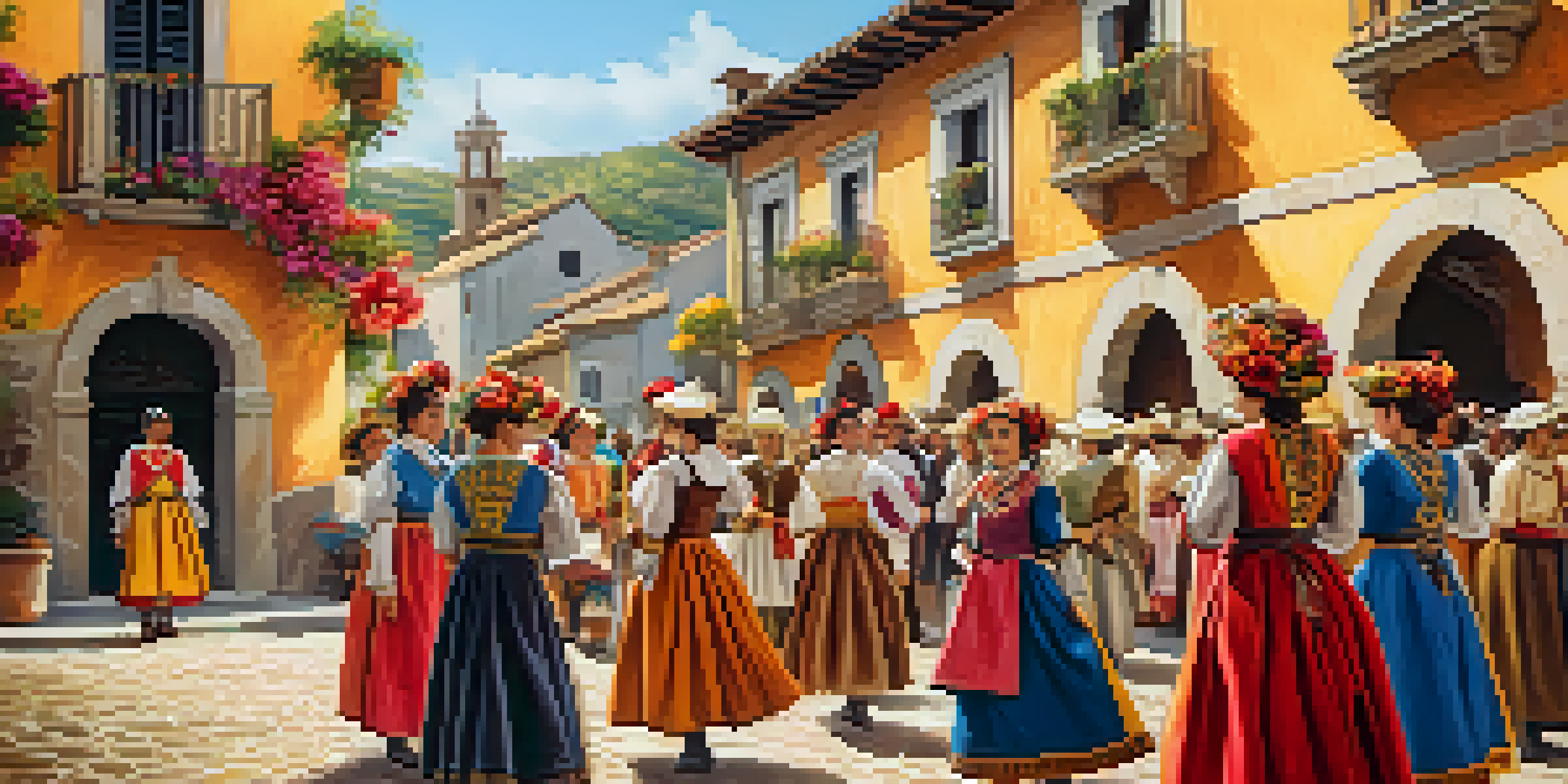The Role of Historical Reenactments in Preserving Spanish Heritage

Understanding Historical Reenactments and Their Purpose
Historical reenactments are events where participants recreate past events, often with a focus on accuracy and authenticity. These gatherings can range from small community events to large festivals, drawing in spectators and participants alike. They serve as a playful yet educational way to connect with history, allowing people to experience it in a more tangible manner.
The Rich Tapestry of Spanish History
Spain's history is a colorful mix of cultures, traditions, and influences, from the ancient Iberians to the Moors and beyond. Each era has left its mark, shaping the language, architecture, and customs we see today. Reenactments often highlight these diverse influences, showcasing how they interweave to create the Spanish identity we cherish.
Reenactments Connect Communities
Historical reenactments foster community engagement by bringing people together for shared experiences, enhancing cultural pride.
How Reenactments Foster Community Engagement
Participating in historical reenactments can strengthen community bonds by bringing locals together for a shared experience. These events often involve not just performers but also craftsmen, musicians, and historians, creating a vibrant atmosphere. This communal engagement not only fosters friendships but also encourages pride in cultural heritage.
Educational Opportunities Through Reenactments
Reenactments offer unique educational opportunities for both participants and spectators. They provide a hands-on learning experience that textbooks often can't match, making history come alive. Schools often incorporate these events into their curricula, allowing students to engage with history in an interactive way.
Educational Benefits of Reenactments
These events provide hands-on learning opportunities that make history come alive for participants and spectators alike.
The Role of Artisans in Historical Reenactments
Artisans play a crucial role in historical reenactments by creating authentic costumes, props, and tools. Their craftsmanship not only enhances the visual appeal of the events but also ensures historical accuracy. This dedication to authenticity helps preserve traditional skills and crafts that might otherwise be forgotten.
Preservation of Language and Traditions
Language and traditions are often at the heart of historical reenactments. Many events incorporate traditional songs, dances, and even dialects, providing a living connection to the past. By keeping these aspects alive, reenactments help pass down cultural narratives to younger generations.
Economic Boost from Heritage Events
Historical reenactments attract tourism, benefiting local businesses and highlighting the importance of preserving cultural heritage.
Tourism and Economic Impact of Reenactments
Historical reenactments can significantly boost local tourism, attracting visitors eager to experience Spanish culture firsthand. Local businesses often benefit from increased foot traffic, as tourists seek food, souvenirs, and accommodations. This economic impact underscores the importance of preserving heritage through engaging events.
Challenges and Future of Historical Reenactments
Despite their benefits, historical reenactments face challenges, such as funding and changing public interest. As society evolves, so too must these events adapt to remain relevant and engaging. By embracing new technologies and narratives, reenactments can continue to play a vital role in preserving Spanish heritage for future generations.